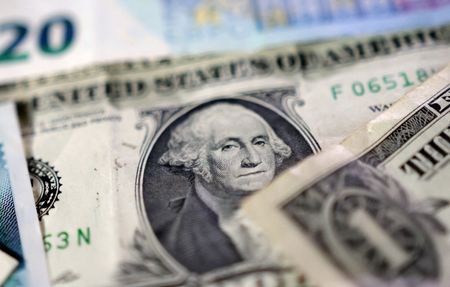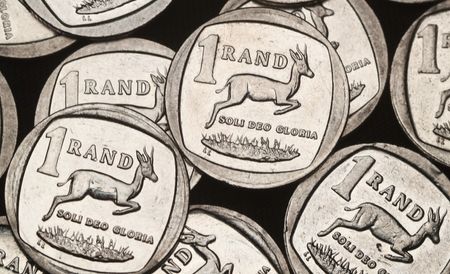By Ozan Ergenay and Tom Westbrook
LONDON/SINGAPORE (Reuters) -The yen was the worst performer against an otherwise weaker dollar on Monday, as investors watched for any signs of official buying from Tokyo to stem the slide in the Japanese currency.
The dollar was last up 0.27% on the Japanese currency at 156.8 yen, just shy of its 10-month high hit last week.
Japan’s currency has been sliding on a combination of looser fiscal policies and some of the lowest interest rates in the world, prompting traders to ask whether Japanese authorities might step in to stop their currency weakening further.
However, the yen managed to gain some ground on Friday, bouncing from 10-month lows after Finance Minister Satsuki Katayama stepped up verbal intervention warnings to stem the currency’s decline.
Traders see a risk of intervention somewhere between 158 and 162 yen per dollar, with Thanksgiving-thinned trade later in the week a possible window for authorities to step in.
“The yen at the moment is caught between two factors. On the one hand, you have higher rates at the front end, with the BOJ continuing to hike, and on the other side the equation is the long end of the curve, which has been moving higher on potential fiscal downside risks,” said Nick Rees, head of macro research at Monex Europe.
Higher long end yields are a sign of trader worries about risks to the Japanese economy, and the scale of government stimulus plans and a negative for the yen.
Japan can actively intervene in the currency market to mitigate the negative economic impact of a weak yen, Takuji Aida, a private-sector member of a key government panel, said in a television programme on public broadcaster NHK on Sunday.
Rees said intervention would help slow the rise of the dollar against the yen but would not derail it completely, given that the dynamics underpinning such a move were unlikely to change anytime soon.
EURO FIRMS, STERLING FLAT AHEAD OF UK BUDGET
Elsewhere the euro rose 0.2% to $1.1539, with the dollar hurt by comments from Fed policymaker John Williams, who said on Friday that interest rates can fall in the near term, bolstering the prospects of a cut in December.
“Fundamentally, we don’t think the Fed is at the end of their easing cycle. We think there are more cuts coming but it is really a question of pace for us,” Rees added.
Sterling was marginally softer at $1.3088 ahead of Wednesday’s budget announcement. Finance minister Rachel Reeves is seeking a balance between spending to support faltering growth and demonstrating to investors that Britain can meet its fiscal targets. [GBP/]
That all left the dollar index steady at 100.12.
Markets were also gearing up for potential catalysts, including the release of U.S. retail sales and producer prices data due later in the week.
The Australian dollar was at $0.6457, with traders looking ahead to Wednesday’s CPI reading, which will be the first full release of monthly price data. A Reuters poll showed weighted annual CPI is expected to be sticky at 3.6%.
Cryptocurrency markets steadied over the weekend, but pressure resumed on bitcoin in the Asia day, pulling it down 2.3% to $86,007.
(Reporting by Ozan Ergenay and Tom Westbrook, Editing by Shri Navaratnam, Amanda Cooper, Gareth Jones and Chizu Nomiyama )








